New marketing and advertising nomenclature comes at you fast and furious.
I’m sure sometimes you wish you had a glossary handy. (We happen to have one here. How about that?)
Have you come across this one: content advertising?
What is content advertising?
Content advertising is the process of creating content to be promoted via paid distribution channels.
Perhaps it’s more helpful to understand what content advertising isn’t, which is another popular marketing phrase it can easily be confused with: content marketing.
I’ve seen an extensive array of definitions for content marketing. Here’s what the online dictionary offers:
con·tent mar·ket·ing
noun
a type of marketing that involves the creation and sharing of online material (such as videos, blogs, and social media posts) that does not explicitly promote a brand but is intended to stimulate interest in its products or services.
Quick time out… It doesn’t have to be online material though it usually is.
Content Marketing Institute explains, instead of pitching your products or services, you provide relevant and useful content to your prospects and customers to help them solve their issues.
Okay, content marketing can do that and many say it should. I suppose it depends on your definition of “useful.” Certainly a majority of B2B marketers stress the problem and solution approach with a majority of their content, and a huge contingent of consumer brands do the same.
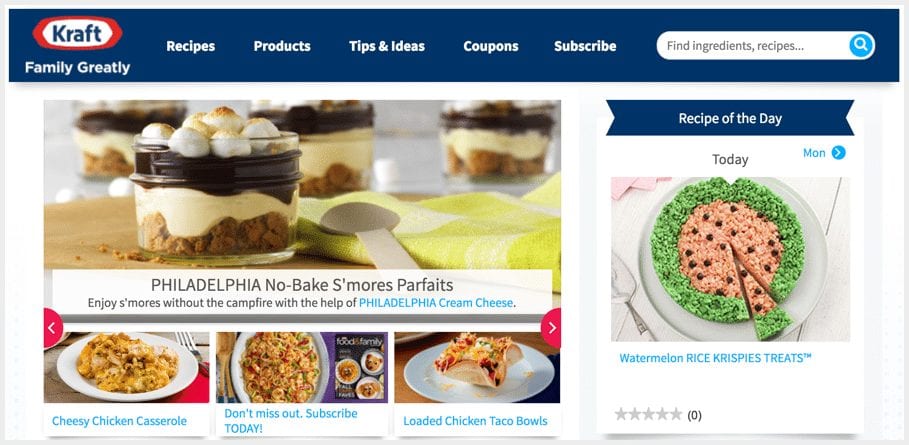 Clearly, a collection of recipes is useful and relevant for a food brand. Are funny cat videos? Trivia quizzes? Games? It’s up to you.
Clearly, a collection of recipes is useful and relevant for a food brand. Are funny cat videos? Trivia quizzes? Games? It’s up to you.
Are coupons content? They strike me as relevant, useful and problem-solving, however they usually do explicitly promote a brand. I suppose the conclusion is a massive array of media qualifies as content. Much of it qualifies as content marketing, but none of it demands the inclusion of a media budget.
Content advertising does. It’s not free.
When you do content advertising you can expect to get an invoice.
So why pay for content advertising?
In 2018, it’s insanely easy to answer the question above. You pay for content advertising because you want people to:
- Discover your content
- Engage with your content
- Respond to your content
But wait, you say… Aren’t social media channels and search engines the linchpins of content distribution? And can’t you enjoy the same benefits above organically (that is, not paying for it?)
Yes, you can. But you probably won’t be satisfied with the results because they seldom come quickly and they’re NEVER guaranteed.
Why?
- The competition is off the charts.
- Social media sharing has declined markedly in recent years.
- Only 1.5% of web pages will ever generate 100 visits or more.
So the explanation for why you pay for content advertising is that you do so knowing the content you planned so meticulously and worked so hard to create will reach potential buyers.
Despite all the arrows aimed at the advertising industry in this digital-first millennium, it remains alive and well. Advertising continues to be the backbone and financial foundation of media.
And so content marketing and advertising aren’t foes; they’re friends. Let’s talk about some of the places you’ll find their relationship going strong.
Content advertising format examples.
Content advertising thrives across the digital world in just about all of the popular channels. Let’s look at some content advertising examples.
Search
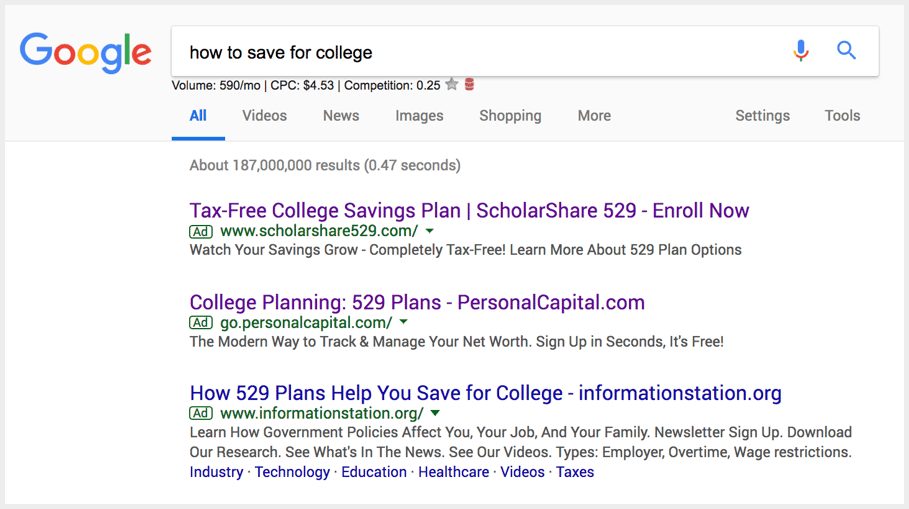
A search for “how to save for college” produced the three paid ads above. Clicking through led me to landing pages offering (1) a process to open an account (2) an offer to register for free financial tools, and (3) an educational blog post and video.
I’m instantly struck by the notion that content advertising can serve the needs up and down the sales funnel—from awareness, to consideration, to decision.
Social media
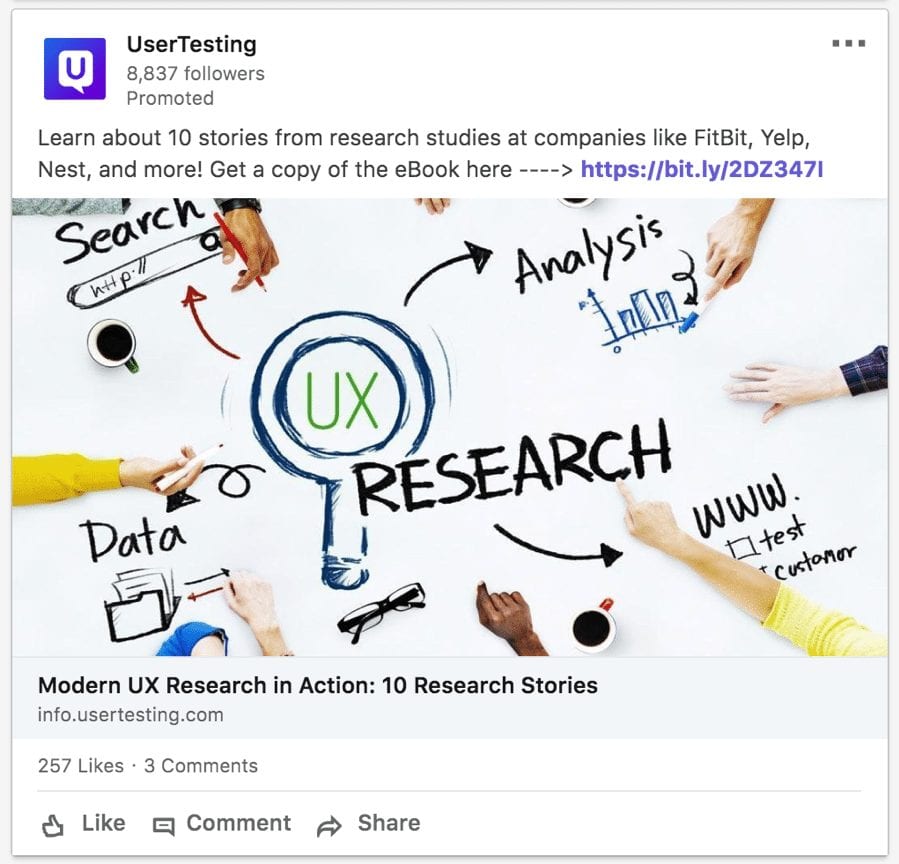
Though Facebook is the current champion of ad revenues in the social sphere, a variety of LinkedIn programs satisfy the content advertising needs of B2B marketers.
Social media ads can be laser-targeted. My feed (because of my profession) always features ads offering content about digital marketing and media, like the one above and it’s respective landing page.
Content discovery
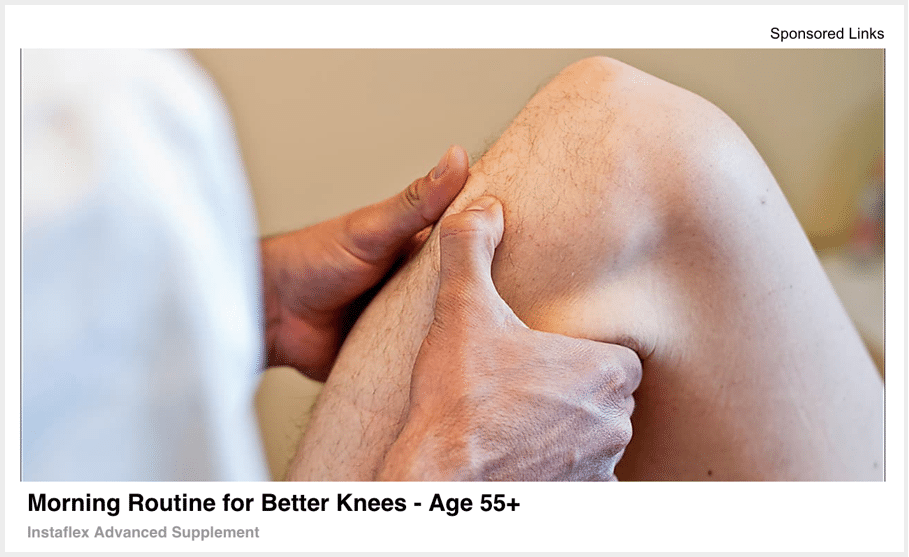
I came across this native ad on a news site in the sponsored link feed powered by Taboola’s content discovery platform.
How to Start a Discovery Campaign From Scratch
The landing page it serves is a compelling combination of an advertorial and offer for a free sample of the product.

Here’s another strong example. The landing page for this native ad delivers tips from the advertiser about subsidies and rebates that can cover the upfront costs associated with the installation of solar panels.
As its call-to-action the advertiser, Sunrun, offers a savings calculator that factors in your state’s regulations regarding solar power.
Publisher partnerships
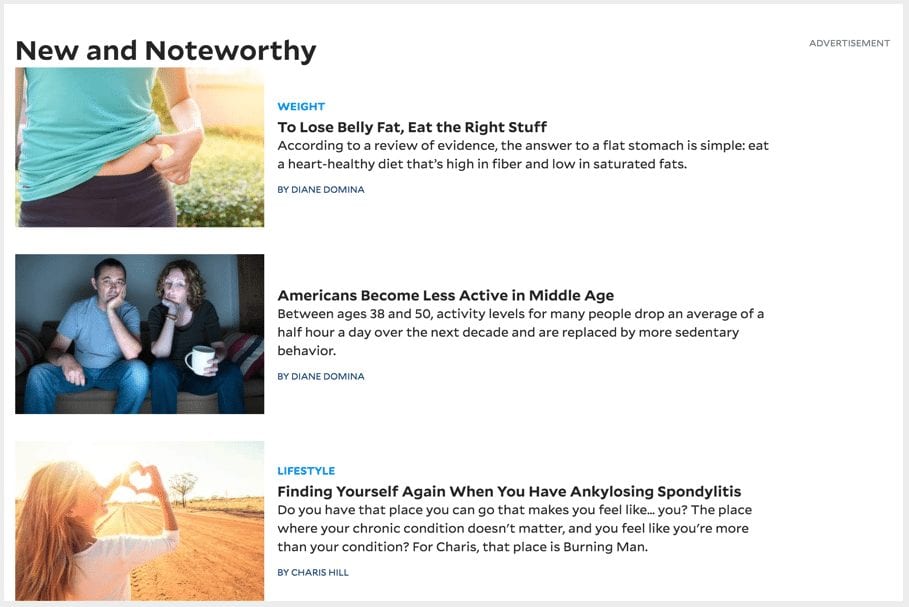
Online publishers offer an array of content advertising options including not only content discovery feed, but also sponsored (and sometimes co-created) content, and of course, display ads.
Mobile apps

The proliferation of mobile apps has produced another popular advertising channel.
I came across the ad above in my Facebook Messenger stream, which promotes a design course.
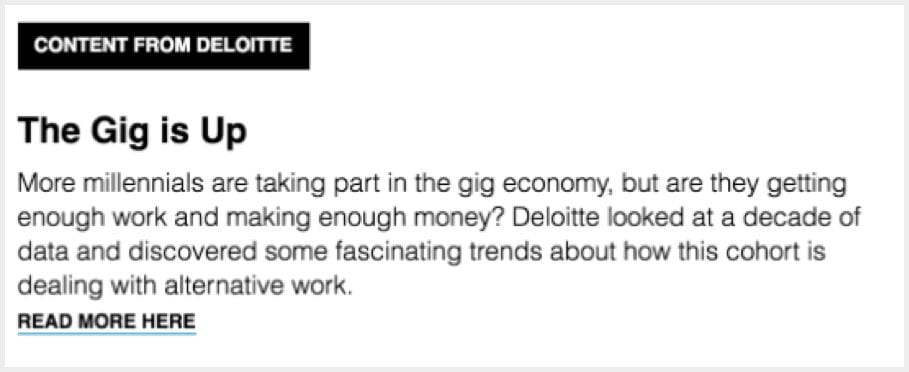
It’s not uncommon to find content advertised in email newsletters. The example above comes from a newsletter by The Broadsheet, from Fortune.
Deloitte’s ad links to “Decoding millennials in the gig economy,” which features findings from a recent research study regarding trends in the millennial workforce.
Take your content advertising efforts offline too.
The medium need not be digital to provide a useful home for content advertising. As a content marketing professional, I can’t help but notice the many ways brands now promote helpful content in places beyond the Internet.
- Radio and television—I often hear and see examples of brands running commercials specifically about an information asset they want to give away. Or, the call-to-action features some sort of guide or assessment.
- Print—The same goes for print ads. Ads often entice readers to visit a website or call to order some free and valuable information.
- Events—If you go to conferences or brand-sponsored events, you’ll find brands distributing free books and so forth or asking for your business card or email address in exchange for content.
- Point-of-sale—Content advertising (or at least content promotion) has become part of the in-store experience too. Are there media costs? There could be. Otherwise, partnerships or affiliations could come into play.
Content advertising is not another name for content marketing.
Content advertising is also not another name for native advertising (though it’s often executed via the channels that support native). It’s simply a strategy and process that involves producing content to be promoted via paid distribution channels.
The reason it’s hot enough to justify a post specifically about it is the approach doesn’t rely on search, social or any “hit and miss” form of distribution. It’s more scalable and far easier to control.
Conclusion: use content advertising to overcome organic challenges.
Content advertising is about overcoming the challenges of organic channels and placing some chips on programmatically targeting potential customers at every stage of the buying cycle.
Some things to remember about content advertising:
- Content advertising is simply advertising your content
- It’s an effective strategy because the competition for organic reach is off the charts
- Search, social, content discovery, publisher partnerships and email are all channels to look into when starting out with content advertising.
- Offline channels can also be useful for distributing content.